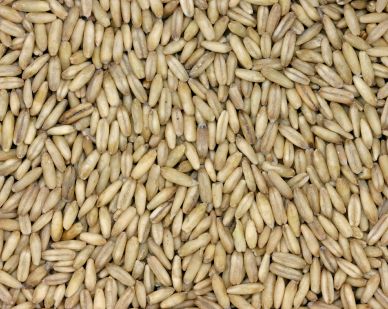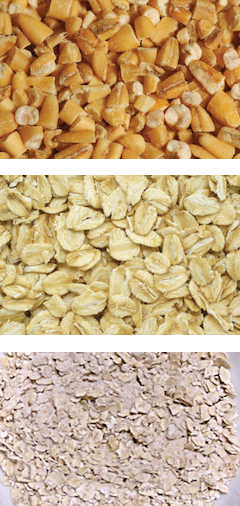Chris Evans – Captain America workout
Chris Evans transformed his physique to play superhero Captain America in this summer’s blockbuster movie. Here’s how he did it.
Chris Evans is no stranger to breathing life into comic book heroes, having previously starred as Johnny Storm in theFantastic Four movies. But for the American actor’s latest role as the eponymous hero of Captain America: The First Avenger, he had to transform his physique into something as close to the perfect human specimen as possible.
‘The studios had a very specific idea about how they wantedChris to look,’ says Evans’s personal trainer Simon Waterson, the man also behind the radical transformations ofDaniel Craig as 007 and Jake Gyllenhaal as the Prince of Persia. ‘My brief was to build Chris a strong, big and lean body that was realistic, functional and in proper proportion. In the movie, his character is physically transformed into the perfect soldier specimen so he had to look the part.’
The plot of Captain America: The First Avenger seesEvans play Steve Rogers, a sickly young man who tries to enlist in the US Army in 1943 to fight the Nazis but is deemed physically unfit. He instead volunteers for Project: Rebirth, a secret military operation to aid the US war effort that uses a serum to convert him into the peak of human perfection and become the super-soldier that is Captain America. He is then deployed to bring down Hitler’s treacherous head of advanced weaponry, the Red Skull, played by Hugo Weaving.
Under Waterson’s guidance Evans increased his weight from 77kg to 82kg, while reducing his body fat percentage from 12.5 to just eight per cent.
To help Evans add lean muscle mass quickly, Waterson gave the actor a training regime based on high-weight/low-rep sets of the classic compound lifts, specifically squats, deadlifts, incline bench presses and weighted dips and chin-ups.
‘He also did a lot of bodyweight moves and included some plyometrics to fire up his fast-twitch muscle fibres, such as squat-to-box-jumps,’ says Waterson. ‘The aim was to keep his heart rate high throughout the workouts. I didn’t want to ignore this aspect of fitness because once filming started Chris was effectively going to have to work out on camera during the action scenes while wearing a 6kg costume as well as carrying a helmet and shield.’
Adding serious muscle while cutting fat is one thing, but doing so while managing not to injure a Hollywood leading man put additional pressure on Waterson to deliver the ideal leading-man physique.
‘Chris had done some weight training before, but as with a lot of guys it had been focused on the vanity muscles of the chest, arms and abs,’ says Waterson. ‘These guys are always amazed when I point out that they have muscles on the backs of their bodies too. But Chriswas great to train. He understood the importance of a balanced physique. I had to work him hard but at a sensible pace – I couldn’t afford to have him sidelined for four weeks with an injury.’
The transformation didn’t come easy – Evans especially hated leg training. ‘But then who loves training legs?’ says Waterson. ‘Because if you are doing it properly it is the most painful session there is. Legs never hurt just for a day afterwards – it always lasts into the week. But your legs and glutes are the biggest and strongest muscles in your body so you must train them hard to get bigger and leaner everywhere else. So many men ignore legs because they want big arms, but pushing your lower body to the limit will transform your upper body faster than anything else thanks to a big growth-hormone response.’
‘The biggest challenge for Chris was eating enough to put on muscle but avoid storing any excess energy as fat,’ says Waterson. ‘We relied on low-carb protein shakes in between meals and snacks such as fruit and nuts. I also had him take branched-chain amino acids (BCAA) throughout the day to reduce muscle tissue breakdown and encourage growth. The aim each day was about 2g protein per kg of bodyweight.’
You too can get a superhero body with Evans’s legs workout and Waterson’s nutrition tips.
Captain America's legs workout
‘Pick a body part and hit it hard,’ says Waterson, ‘then give it time and nutrients to recover: fatigue, feed then leave – it’s really that simple.’ Perform one warm-up set for each exercise, then do three sets of six to eight reps at your eight-rep max.
1 Squat
2 Lunge
3 Leg press
4 Calf raise
5 Hamstring curl
Captain America's nutrition plan
Breakfast
Bowl of porridge with dark berries and walnuts
Morning snack
Protein shake and 5g BCAA
Pre-workout snack
Apple with almonds
Post-workout snack
Protein shake and 5g BCAA
20min later
Chicken salad with brown basmati rice
Afternoon snack
Protein shake
Dinner
Lean protein, such as fish, chicken or beef, with vegetables. No starchy carbs.
Breakfast
Bowl of porridge with dark berries and walnuts
Morning snack
Protein shake and 5g BCAA
Pre-workout snack
Apple with almonds
Post-workout snack
Protein shake and 5g BCAA
20min later
Chicken salad with brown basmati rice
Afternoon snack
Protein shake
Dinner
Lean protein, such as fish, chicken or beef, with vegetables. No starchy carbs.
 You know how we say that grains exist on a spectrum of suitability, from “really bad” wheat to “not so terrible” rice? Well, what about the rest of ‘em? They may be the most commonly consumed (and thus encountered) grains, but wheat and rice aren’t the only grains on the spectrum. Since I get a lot of email about oats, I figured they were a good choice for this post. Besides – though I was (and still mostly am) content to toss the lot of them on the “do not eat” pile, I think we’re better served by more nuanced positions regarding grains. Hence, my rice post. Hence, my post on traditionally prepared grains. And hence, today’s post on oats. Not everyone can avoid all grains at all times, and not everyone wants to avoid all grains at all times. For those situations, it makes sense to have a game plan, a way to “rank” foods.
You know how we say that grains exist on a spectrum of suitability, from “really bad” wheat to “not so terrible” rice? Well, what about the rest of ‘em? They may be the most commonly consumed (and thus encountered) grains, but wheat and rice aren’t the only grains on the spectrum. Since I get a lot of email about oats, I figured they were a good choice for this post. Besides – though I was (and still mostly am) content to toss the lot of them on the “do not eat” pile, I think we’re better served by more nuanced positions regarding grains. Hence, my rice post. Hence, my post on traditionally prepared grains. And hence, today’s post on oats. Not everyone can avoid all grains at all times, and not everyone wants to avoid all grains at all times. For those situations, it makes sense to have a game plan, a way to “rank” foods. Steel-cut oats are whole groats chopped into several pieces. Some of the bran flakes off, but some is retained. Steel-cut oats take longer to cook, contain the most nutrients (and
Steel-cut oats are whole groats chopped into several pieces. Some of the bran flakes off, but some is retained. Steel-cut oats take longer to cook, contain the most nutrients (and 




